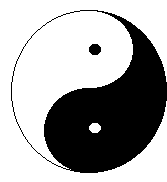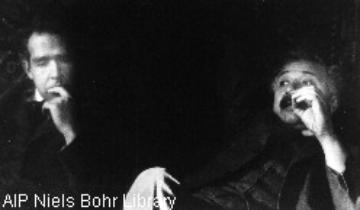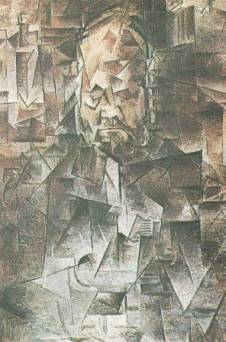
According to Bohr's 'principle of complementarity', wavelike and corpuscular pictures, though mutually exclusive, are both necessary to give an exhaustive account of quantum phenomena. Furthermore, this account requires that one states unambigously the experimental context in which the phenomena are obtained. According to this 'Copenhagen view', physics does not reveal to us an external, pre-structured world. Rather, it provides us with an objective method to establish correlations between experimental operations and occurrences that are defined within a certain experimental and conceptual frame.


Following this line of thought, a number of attempts were made to develop a theoretical framework based on the so called hidden variables, i.e. those variables which were supposed to escape the formalism of quantum mechanics and to govern phenomena at a deeper, perhaps deterministic level. David Bohm elaborated for example a model in which particles follow a precise trajectory, determined not only by conventional physical forces but also by a quantum potential that is supposed to supply 'active information' about the whole environment in which the motion takes place.
Since the Thirties, this approach was rejected as 'positivistic' by some influent physicists (the issue was at stake in the famous discussios between Einstein and Bohr). What they found unsatisfactory was mainly the fact that quantum theory was unable to provide us with a coherent representation of reality (a reality conceived as independent from the observers' means of investigation).
The quantum theory of radiation has led to the invention of such a fundamental device as the laser, whose applications in contemporary technology are unlimited. The corpuscular aspect of radiation has recently become available to direct experimental investigation and individual photons can now be manipulated or used to manipulate atoms. For example, one can build-up gratings of standing waves to implement an atom interferometer, or use light momentum to trap the atoms or to stop their thermal motion, cooling them down to


Among the most impressive collective phenomena, we can mention superconductivity (i.e. the ability of some materials to conduct electric charges without dissipation; extremely strong magnetic fields can thus be generated and highly reflecting surfaces manufactured), superfluidity (i.e. the ability of liquid Helium to flow without dissipation when cooled down to very low temperatures) and Bose-Einstein condensates of atoms.
The latter examples, which refer to macroscopic effects, are quite exceptional, since, in general, wave-particle duality is a characteristic feature of microscopic phenomena. Indeed, to provide a satisfactory quantum account of our current, 'macroscopic' experience, which does not involve the typical effects of wave-particle duality, appears a challenging problem. As discussed in the section about the Schrödinger's cat, this can perhaps be achieved by taking into account the bad isolation of macroscopic systems and their entanglement with the environment (see also origins).





But hidden variables models suffer severe limitations. Some fundamental works, and in particular a couple of famous theorems by John Stuart Bell, have shown that, in order to be compatible with the (successfully tested) predictions of quantum mechanics, 'hidden reality' must exhibit quite exotic features (for example, in order to reproduce the correlations predicted by entangled states, 'hidden reality' must be 'non-local', allowing for instantaneous influence between spatially separated systems). Aside from fundamental implications, interference phenomena are responsible for crucial quantum effects and have wide applications. Just to mention an example, Pauli's exclusion principle can be understood as an interference effect, as well as many other situations in which a particle is never found in a place or configuration which - on grounds of classical considerations - one would expect to be accessible.
Objects must have an autonomous existence and be causally responsible for the observed phenomena. The fact that quantum mechanics didn't say anything definite about these putative objects should be ascribed to a lack of completeness of that theory. Furthermore, for these scientists, the very indeterminism of quantum phenomena seemed to point in the direction of an 'underlying' deterministic reality and to suggest the possibility of reducing quantum theory to a more fundamental theory, in the same way thermodynamics had been reduced to statistical mechanics.